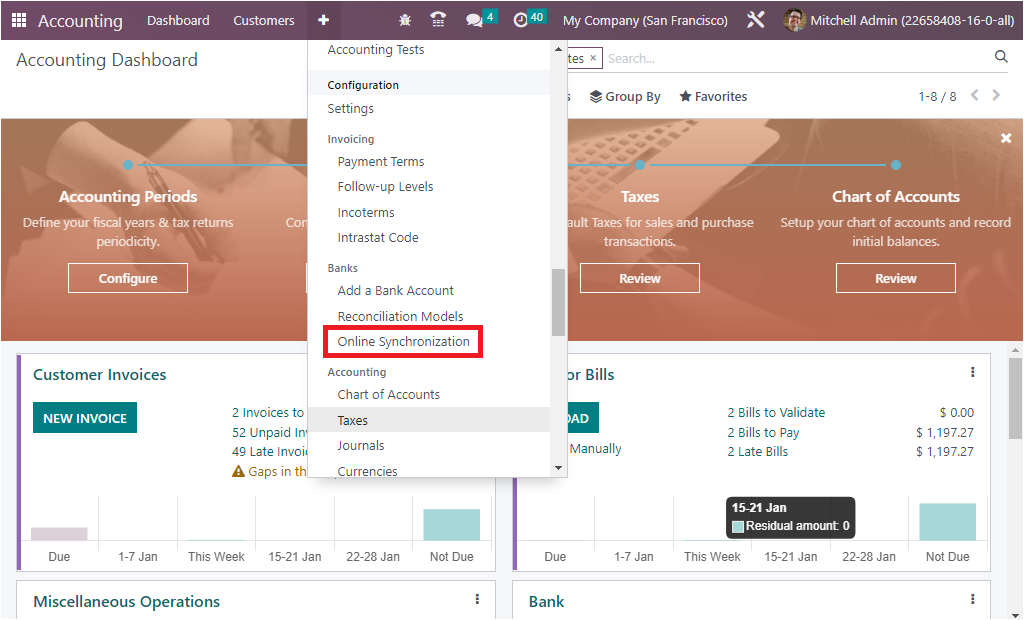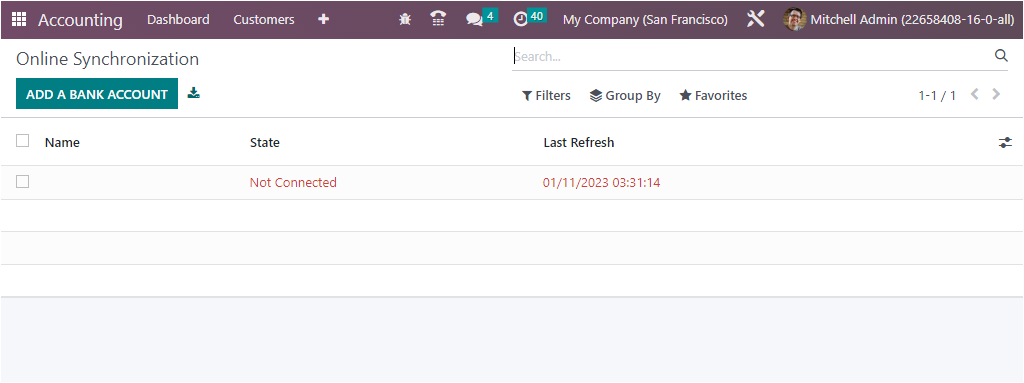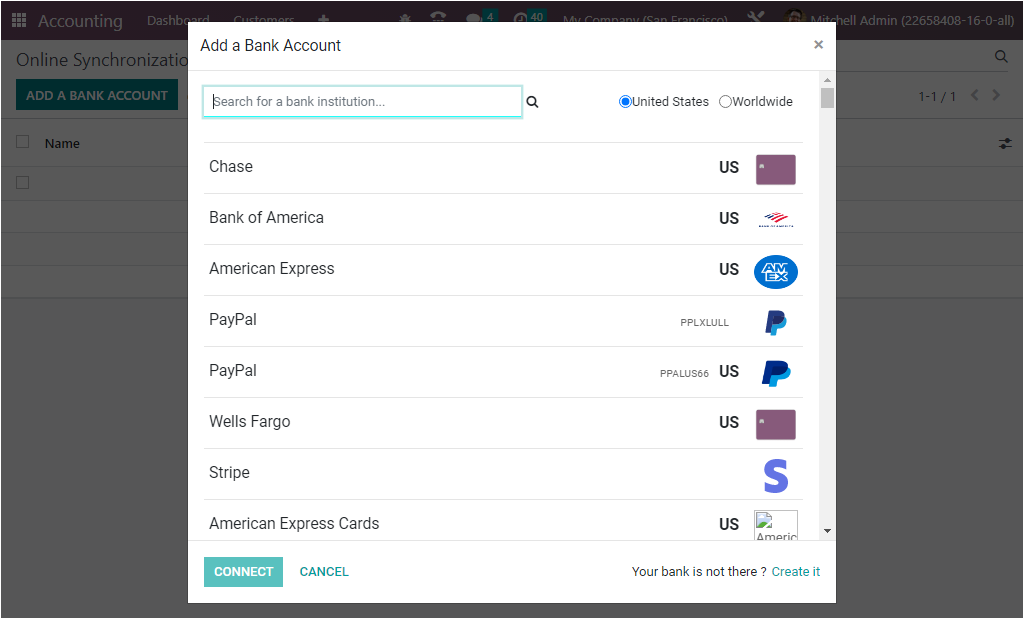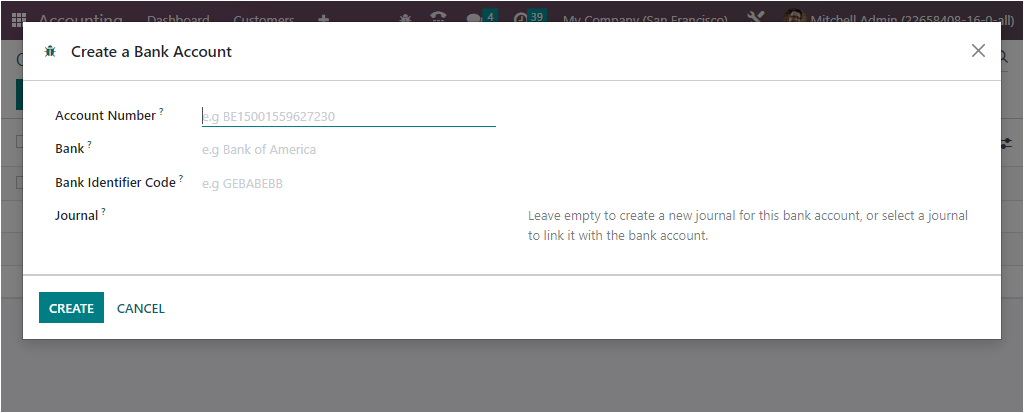Online Synchronization in Odoo 16 Accounting is a relevant feature that admits its
users to keep their books or records up to date and synchronized with their external
accounts. It automatically imports and synchronizes data from external accounting
systems. It also allows users to map their accounts and automatically generate transactions,
such as invoices, payments, and journals. The feature also supports double-entry
bookkeeping, allowing users to keep their books balanced and accurate. Additionally,
you can easily reconcile your bank accounts to ensure all their transactions are
accounted for.
This powerful feature helps you to synchronize your Odoo Accounting data with an
external system and enables you to keep your accounting data up-to-date and accurate,
making it easier to share data with other systems. The Online synchronization feature
works by establishing a connection between two systems, such as Odoo and an external
accounting system. Once the connection is established, the two systems can exchange
data in real-time. This means that when an entry is made in one system, it will
be automatically updated in the other.
This feature permits you to configure options for how data is exchanged between
the two systems. For example, you can select which fields are synchronized and which
fields are excluded. You can also configure how data is handled in the event of
conflicts between the two systems.
The Online Synchronization feature is the best suitable way to record every synchronized
time with the bank account and Odoo. it allows you to sync your local Odoo database
with your Odoo cloud instance. This feature is designed to make the process of transferring
data between multiple databases easier and more reliable. The Synchronization feature
works by periodically sending data from the local Odoo database to the Odoo cloud
instance, and then downloading any changes from the Odoo cloud instance. This ensures
that both databases are up to date and that any changes made in one database are
reflected in the other.
In order to use the Synchronization feature, you must first set up the connection
and authentication between their local database and the Odoo cloud instance. This
is done in the Configuration section of the Odoo interface. Under the Banks section
of the Configuration tab, you can access the Online Synchronization menu as shown
below.

Once a connection is established, you can configure the synchronization parameters,
such as frequency and the data to be synced.

The Online Synchronization window permits you to add a bank account by selecting
the ADD A BANK ACCOUNT menu available on the top left. Next moment, you will depict
another window with all the banks of operation described as shown below.

You can select the bank accounts from the list that you already have described for
your company operation. After choosing the required bank, click on the Connect button
to sync with the respective bank account.
In case your required bank is not there in the list, you are able to create a new
one with the help of the ‘Create it’ option displayed in the bottom right corner
of the window. Upon selecting this button, you will meet with a pop-up menu where
you can create a new bank account.

With this window, you can create a new bank account by providing the required pieces
of information such as Account Number, Bank, Bank Identifier Code, and Journal
The very convenient Odoo instance provides almost all the prominent banks serving
worldwide in the list of bank accounts for smooth functioning and also provides
you the option to create custom bank accounts with your preferences.
Once the bank is created and connected with Odoo, the bank statements will be automatically
fetched from the bank server to Odoo at a particular interval of time say in every
4 hours or in every 12 hours, which can be set in the scheduled action for the online
synchronization. So under online synchronization, it will record all the synchronized
time with the bank, including its state like whether connected, error or not connected,
etc, and the latest refresh date and time.
So the feature is very convenient to view and manage the synchronization process
in real-time. Users can view logs of any synchronization activities and also view
the status of the synchronization process. This helps users to identify and troubleshoot
any errors that may be encountered during the synchronization process.
Overall, the Online Synchronization feature in Odoo 16 Accounting is a useful tool
for managing data between multiple databases. It provides users with a reliable
and secure way to transfer data between multiple databases, helping to reduce manual
processes and data errors.
So far, we have been discussing the different features available under the Accounting
Configuration menu and the tools described under the Configuration tab of the Accounting
module. Now let us discuss the different Payment configuration options available
in the Odoo 16 Accounting module in detail.